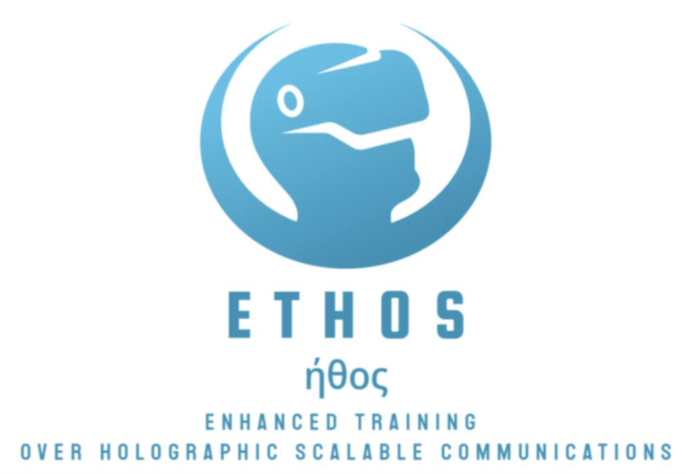Read the interview with Gianluca Cernigliaro and his winning proposal: ETHOS – Enhanced Training over Holographic Scalable Communications
Participants from TNO: Gianluca Cernigliaro, Simon Gunkel, Lucia D’Acunto, Tom de Koninck
Participants from Over the Reality: Glauco Miniussi, Ivan Prez

Gianluca Cernigliaro and TNO
Gianluca Cernigliaro is a Senior Scientist at TNO. His background has video processing as common denominator, expertise applied in fields such as computer vision, 3D-video compression and holographic communications. He enriched his expertise with EU funded project acquisition and management, being Technical Coordinator and Coordinator of projects such as VR-Together, XRECO and Presence. In 2024 he joined TNO, an independent research organisation that connects people and knowledge to boost the sustainable competitive strength of industry and well-being of society, and the ISP department, focusing on digital innovations in areas such as cybersecurity, networks, data science and embedded systems.
Can you give a brief overview of your winning proposal?
What are its key objectives and innovative aspects?
Bandwidth and processing needs are slowing down the use of XR and volumetric video. Holographic communications are considered the next paradigms for remote interactions, particularly useful in use cases where a feeling of human presence is needed. ETHOS will provide a holographic system designed to exploit next generation networks thanks to the Holographic Multipoint Control Unit, a distributed optimisation tool capable of maximising the scalability of holographic transmission in real time and between users remotely located. The Holo-MCU will be an integrated part of the SPIRIT platform and infrastructure, becoming i) compatible to the Ericsson holographic communication system; ii) deployed on the Deutsche Telekom T-Systems infrastructure; iii) pushing the limits of the platform providing a new set of requirements thanks to the Quality of Experience benchmarking provided by University of Klagenfurt. The holographic communication system will be integrated in a use case focused on training in the manufacturing industry.
What motivated you to apply for the SPIRIT Open Call?
The growing popularity of XR devices and applications is making them widespread along many sectors (remote presence, training and manufacturing among others). Nevertheless, bringing realistic holographic communications is still a prime challenge for immersive technologies. SPIRIT has the ambition of improving the current state-of-the-art, addressing current limitations such as human presence in immersive applications and real time holographic communications. Together with SPIRIT, ETHOS will bring real humans remotely located in XR experiences allowing remote interaction, joint assets manipulation and a realistic feeling of being there. Moreover, the close collaboration with partners such as Ericsson, Deutsche Telekom and University of Klagenfurt will provide valuable inspiration and opportunities for growth, fostering a productive partnership.
How do you envision this project making an impact?
ETHOS will contribute to the next paradigms for human remote interactions bridging the digital-physical divide and bringing innovative solutions to the manufacturing industry, potentially having medium- and long-term impact on European science, technology and industry environments. While the use of XR for manufacturing training is not new, the emphasis of ETHOS on the additional human interaction through holographic communication will provide additional benefits. Industry and enterprises are facing a new problem, namely the lack of skilled personnel. ETHOS provides improved training modalities in XR, on the one hand by promoting the wider adoption of XR solutions in the industrial sector, particularly with regard to technical and operational training, and on the other hand by accelerating the training of new personnel and improve motivation for industrial (re)certification. We aim at setting a new standard for research and for validation of holographic communication.
